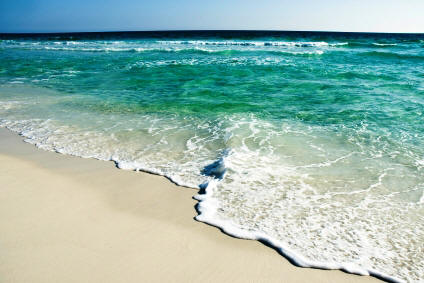Floridian Nature Nature Spot of the Week: Henderson Beach State Park
Henderson Beach State Park has one of
Florida's greatest natural assets, sugar white sand beaches. The centerpiece
of this park is the expansive white-sand beach that provides a variety of
different experiences, from swimming and sunning to dolphin watching and
shelling. Swimming is permitted at Henderson Beach State Park but lifeguards
are not provided. However, swimming safety flags are posted each day in
order to help visitors determine whether or not they should swim. Surf
fishing is permitted at the park with the proper license. Anglers can expect
to catch pompano, flounder, catfish, redfish, whiting, and a few other
species. Two large pavilions allow for picnicking and grilling. A playground
is the first stop on our nature trail and is sure to be a success with the
kids. The nature trail provides visitors a rare glimpse of the coastal dune
ecosystem and abundant wildlife and is pet friendly.
The most common dolphin in Florida waters is the
bottle-nosed dolphin. Bottlenose dolphins have robust, powerful bodies
that are blue-gray on top with lighter sides and bellies. This dolphin
has an unusually short and stubby beak, hence the name "bottlenose". The
bottlenose dolphin has more flexibility in its neck than other oceanic
dolphins. As adults they are typically six to twelve feet long, and live
both inshore and offshore along temperate and tropical coasts worldwide.
Dolphins breathe air at the surface of the water through a single
blowhole located near the top of the head. They need to breathe about
every two minutes, but can hold their breath for several minutes. Their
blow is a single, explosive cloud. Feeding behaviors for the bottlenose
dolphin are diverse, primarily involving individual prey capture, but
sometimes involving coordinated efforts to catch food, feeding in
association with human fishing, and chasing fish into mud banks.
Bottlenose dolphins eat a wide variety of food, consuming more than 20
pounds of mullet,
sheepshead, pinfish, flounder and marine
invertebrates each day. Male bottlenose dolphins reach sexual maturity
at about 10 years. Females reach sexual maturity at about 5-10 years.
The gestation period is 12 months. Calving can take place year-round
with peaks in some areas during spring and fall. Calves nurse for over a
year (12-18 months), and stay with their mothers for 3-6 years learning
how to catch fish and other important tasks.
In 2001, volunteers helped build a 3/4 acre nature trail at Henderson.
The trail winds through a number of different kinds of vegetation
including sand pines, scrub oaks, and dune rosemary, also known as
coastal scrub. The trail climbs the park's gently sloping dunes and to
the top of a particularly high dune that is the remnants of a bunker
built decades ago when the military made use of the area around
Henderson Beach. This vantage point provides great views of the park and
the Gulf of Mexico.



Comments
Post a Comment